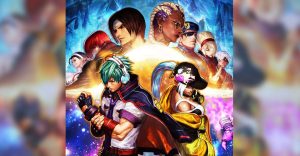WandaVision Ruined Hayward’s Post-Endgame Villain Arc

When WandaVision introduced S.W.O.R.D. director Tyler Hayward’s true reason for studying Vision’s body, it set him up for a fascinating post-Endgame villain arc. Hayward belonged to the half of the world’s population that survived Thanos’ snap in Avengers: Infinity War. He alluded to Monica Rambeau how terrifying it was to be one of the ones left behind, suggesting he rebuilt Vision because he wanted to create a weapon that would ensure nothing like that would ever happen again. It’s a twisted, but slightly understandable motivation — but sadly, all hopes of that complex storyline were dashed with one scene in the WandaVision finale.
Hayward’s plot was diabolical in WandaVision. He managed to convince military personnel investigating Westview that Wanda stole Vision’s body from the S.W.O.R.D. facility and reanimated him inside the Hex. But in reality, Hayward’s team was stripping the original Vision’s body for parts to create a new weapon: White Vision. Hayward’s plan was to secretly send White Vision into the Hex, have him eliminate Wanda, and pretend the Vision that emerged was the body that Wanda had stolen.
In a move that probably deviated from his original plan, Hayward ended up inside the Hex himself during “The Series Finale.” He desperately wanted to protect his weapon, which ended with him attempting to shoot Wanda and Vision’s twin sons, Billy and Tommy. That moment took Hayward from a darkly idealistic villain with relatable motivations to one simply obsessed with power and capable of despicable actions. Villains like that are a dime a dozen in the MCU, making them forgettable.

Hayward’s villain arc had the potential to meet those of Black Panther‘s Erik Killmonger and Spider-Man: Homecoming‘s Adrian Toomes. Both of those antagonists had their own valid points — Killmonger rightfully believed that people of African descent deserve to be free of oppression and Toomes wanted the Avengers to know that their actions impacted people far down on the economic food chain. Killmonger and Toomes may have gone about fulfilling their individual missions in dangerous and harmful ways, but there was always a grain of truth at the core of their beliefs, making the characters sympathetic. Hayward also initially came from a place that made sense — he survived a traumatic, once-in-a-life-time event — but unlike most people who survived the snap, Hayward had the power and connections to do something about it. Just like Killmonger and Toomes, he went too far.
But the moment during the WandaVision finale in which Hayward tried to shoot Wanda’s children went against the mission he said he stood for and erased any likability the character had left. He claimed to have built the weapon in order to protect people, but the fact that he tried to murder two children in cold blood completely goes against any sense of morality. It proves that Hayward simply built White Vision out of a personal desire for power rather than a selfless desire to help mankind. It’s a simply unoriginal choice for the WandaVision villain. While the scene acted as a way to show off Monica’s powers, WandaVision sacrificed the opportunity to allow Hayward to become a new kind of villain in the post-Endgame world. Tyler Hayward could have been remembered as the man who went to dangerous extremes in an attempt to protect the world from another Thanos-like attack. Instead, he will go down in MCU history as the guy who tried to shoot Wanda Maximoff’s children.
- Black Widow (2021)Release date: Jul 09, 2021
- Shang-Chi and the Legend of the Ten Rings (2021)Release date: Sep 03, 2021
- Eternals (2021)Release date: Nov 05, 2021
- Doctor Strange in the Multiverse of Madness (2022)Release date: May 06, 2022
- Thor: Love and Thunder (2022)Release date: Jul 08, 2022
- Black Panther: Wakanda Forever/Black Panther 2 (2022)Release date: Nov 11, 2022
- The Marvels/Captain Marvel 2 (2023)Release date: Feb 17, 2023
About The Author

















